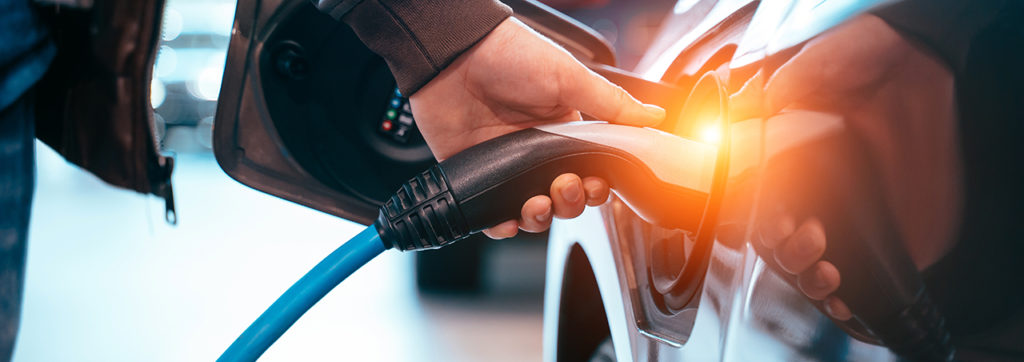
New mobility means more than simply new drives for old means of transport.
The electric power train is certainly the result of ecological and economic necessity. But it is also the expression of a changed view of our mobility. And it is only the beginning of a profound change in the way that we will transport ourselves in the future.
Ideas from yesterday for the transport of tomorrow
The history of electric transport is full of leaps and coincidences. If Henry Ford had decided to produce the then widely used electric car instead of the industrial production of cars with combustion engines at the beginning of the 20th century, today we might be speaking of “smelly exhaust engines” as a footnote in the history of the automobile. But in such a way a complete infrastructure and industry was able to develop just for the “classic” combustion engine. This was not simply a case of conversion, but adapting to new needs and situations, becoming one of the greatest industrial and infrastructure challenges of the century.
In all change: quality remains the constant
It will be exciting to observe the direction the automobile develops in the future. For the business location of Germany, it will also be an existential question. But it doesn’t matter which motors will drive the cars of the future: their quality, the high-quality workmanship and the reliability of the vehicles will always be a guarantee of success. To ensure this, high-quality and reliable components are important. That goes from the largest component to the smallest aids.
Not simply only a new motor
The new, alternative drives have a great influence on the whole structure of the vehicle. Likewise in the area of planning, production, assembly and service. New drives necessitate new materials and open up space for design. However, the possibilities also mean increasing challenges. Among other things, components in electrically driven vehicles have to be lighter and more resilient. Frictional losses and rolling resistance must be reduced. Furthermore, the vehicles will become significantly quieter and interfering noises become more important.
Goal: reducing exhaust and noise emissions
The cars of the future will not only have lower emissions, they will also be quieter. The lack of engine noise is only one aspect of this. The effectiveness of modern alternative drives is also due to the optimisation of weight and rolling resistance. New, lighter components and narrower, quieter tyres likewise contribute to a lower noise level.
Interfering noises such as squeaking, creaking and rattling are more significant in a very quiet setting. And the new, light components in the interiors of the vehicles promote the generation of noise. Light components oscillate more easily and as a result rub more strongly and intensively against each other. That causes more interfering noises. This effect concerns an old problem that has been increased as a result of the new types of drive. On top of this, there are also completely new problems that are not limited to electric cars.
New mobility goes beyond new types of drive
The new mobility does not just affect cars and other means of transport but also means completely new types of transportation. Or also non-transportation. Home office and office sharing offer workers the flexibility they want while sitting in the daily traffic jam or overfilled train in the rush hour. […] The new mobility moves along two axes: flexibility and individualisation. This is already being expressed in the flexible use of multiple means of transport for a single route.
Change with many changes: multi-motion on the daily trip to work
The solution for many mobility and emission problems lies in the combination of several alternatives. Improved interaction of individual and local public transport combined with the new “last mile” options for covering short distances is already offering sensible alternatives today to the classic “car to work” scheme. In this way, the new mobility is also putting an end to old habit patterns.
My house, my boat, our car
With regard to modern travel with different means of transport, ownership can limit the idea of flexibility and freedom. If you own a car, you use it. Even when cheaper, faster or more environmentally friendly possibilities are available. But there are already alternatives. Sharing concepts are already offering the desired flexibility and individuality. However, the vehicle manufacturers are still focussed on the concept of vehicles and their sale based on the classic purchase. More than the ownership relationships, modern vehicles must orientate themselves much more to their purpose.
The short journey as the ultimate challenge
A particular challenge for the mobility of the future lies in the alternatives for short journeys. This is where the classic combustion engine has its greatest weaknesses, while at the same time an increasing demand is arising. Not only in the city either. The centralisation of food and health provision in rural areas uses precisely this measure: Too far for a bicycle, too short for local public transport, which anyway not uncommonly has developed in rural areas ignoring the needs of the people. This development creates a dependency on the normal car, and overcoming that is one of the greatest challenges for the change in mobility. Rolling out the charging structure in rural areas is additionally the largest cost factor. In contrast to cities, here for example the electricity supply is not designed around growth but strictly according to demand coverage. As a result, it is not equipped for a rapid increase in demand.
Shopping, check e-mails or go for a walk: how we will use charging times in the future
The integration of the new mobility will also have consequences for our usual processes and routines. For long-distance journeys, for example, the charging time for electric cars is far higher than the average filling-up time for an ICE. Maybe a new petrol station culture will develop around the extended stay at the petrol stations and service stations like in the 1960s and 1970s. Maybe the potential will also arise for new business possibilities by “capturing” travellers for at least 30 minutes at a location. The question also remains open as to how e-scooters, electric bicycles and charging stations can be integrated into the modern cityscape, and how they can be intelligently and sustainably integrated into the traffic concept of steadily growing cities.
Mobility in times of economic change
The new mobility will change more than just the type of power unit of motor vehicles. In the process, their development must not lose pace with societal changes. The mobility transition can only be achieved if it is oriented to the needs of the users and to the changed social structures.



